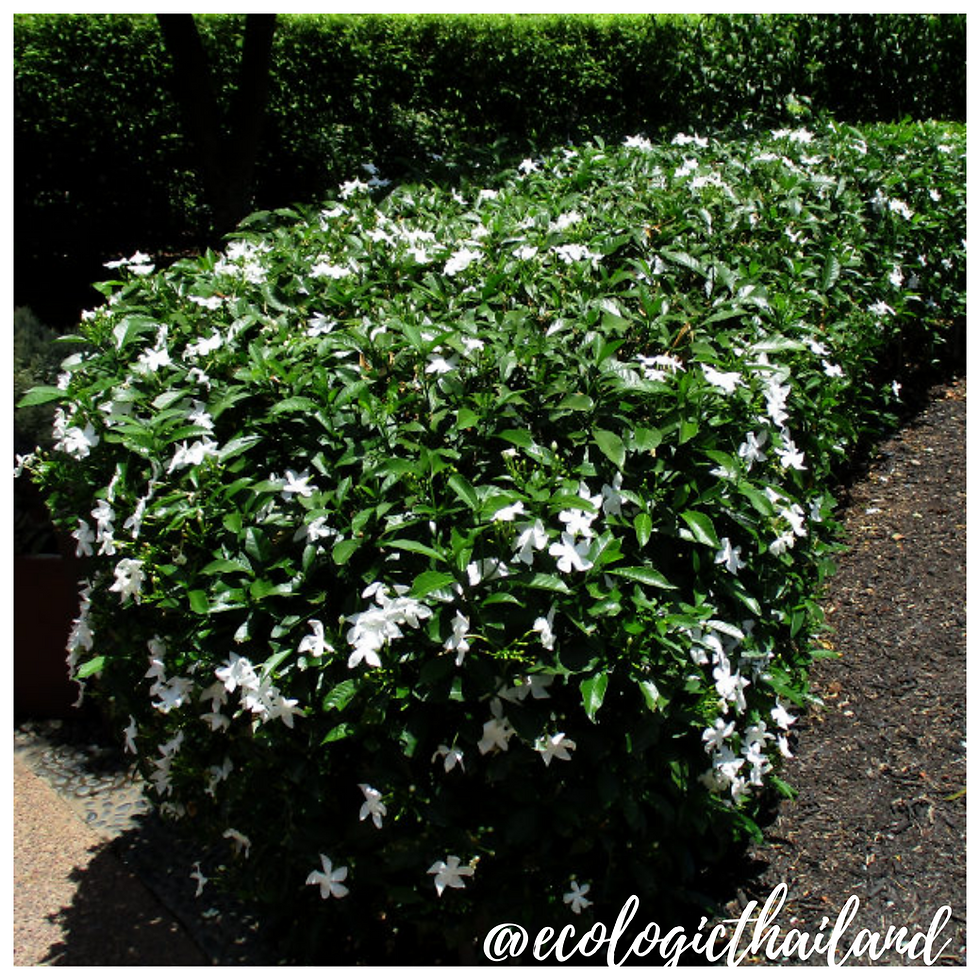Glory Bower
- Eco-Logic Resort
- Apr 21, 2021
- 2 min read
Ping hom | ปิ้งหอม | Clerodendrum chinense
Family: Lamiaceae - Genus: Clerodendrum

You will find the glory bower around the Special School of the Thai Child Development Foundation.
The glory bower, is a species of flowering plant is native to Nepal, the eastern Himalayas, Assam, the Andaman and Nicobar Islands, south-central and southeast China, Southeast Asia, and Malesia.
The plant is also known as Chinese glory bower, Hawaiian Rose, Honolulu rose, fragrant clerodendrum, fragrant glory bower and stickbush.
It is a perennial shrub 0.5-1.2 meter tall. Branchlets are nearly 4-angled to round, velvet-hairy when young, becoming hairless. Leaf-stalks are 3-17 centimeter, velvet-hairy to woolly; leaf blade broadly ovate to somewhat-heart-shaped, 9-22 x 8-21 centimeter, below velvet-hairy especially on veins and with several large glands near base, above bristly, base flat, broadly flat, or somewhat heart-shaped, margin sparsely irregularly toothed, tip tapering.
Flowers are borne at branch-ends, in dense clusters. Flowers are single or double, fragrant. Flowers are white, pinkish, or red, lobes elliptic or ovate.
The Glory Bower blooms during the dry season, at the beginning of the wet season (April-May)

THE PLANT
The Glory Bower is a perennial shrub 0.5-1.2 meter tall. Leaf blades are broadly ovate to somewhat-heart-shaped, 9-22 x 8-21 centimeter.
Flowers are borne at branch-ends, in dense clusters. Flowers are single or double, fragrant. Flowers are white, pinkish, or red, lobes elliptic or ovate.

THE LEAVES
Leaf-stalks of the Glory Bower are 3-17 centimeter, velvet-hairy to woolly; leaf blade broadly ovate to somewhat-heart-shaped, 9-22 x 8-21 centimeter, below velvet-hairy especially on veins and with several large glands near base, above bristly, base flat, broadly flat, or somewhat heart-shaped, margin sparsely irregularly toothed, tip tapering.

THE FLOWERS
Flowers of the Glory Bower are borne at branch-ends, in dense clusters. Flowers are single or double, fragrant. Flowers are white, pinkish, or red, lobes elliptic or ovate.
CULINARY USES
No culinary uses for this plant. The plant is mostly used for decoration and for medicinal use.
TRADITIONAL MEDICINAL USE
NOTE: please take advice from a doctor if you are planning to use herbal medicine.
The leaves are diuretic. A decoction is used in the treatment of blenorrhoea. Juice from the leaves is an ingredient of a herbal bath for children with furuncles. A decoction of the leaves is reputedly a remedy for difficult cases of scabies.
The plant is used in a fomentation for the treatment of rheumatism and ague, and as an ingredient of a mixture for treating skin problems.
The root is considered antibacterial, antiphlogistic and diuretic. It is used in the treatment of abdominal pain, intestinal diseases, kidney dysfunctions etc. It is said to have been used successfully in the treatment of jaundice. It is used for treating a wide range of women's disorders, skin afflictions, lumbago, hypertension and jaundice.
A decoction is applied externally as an antiseptic
INTO THE WILD: a down to earth experience

For guests and visitors to Paksong we organize weekly tours "The Edible Forest" and Foraging weekends: Into the Wild. We work with local guides to take you in the jungle of Paksong. After foraging, we will cook a meal with the ingredients, using bamboo together with you!
Come and join and learn about the abundance of food that nature gives us!
INTO THE WILD!


















Comments